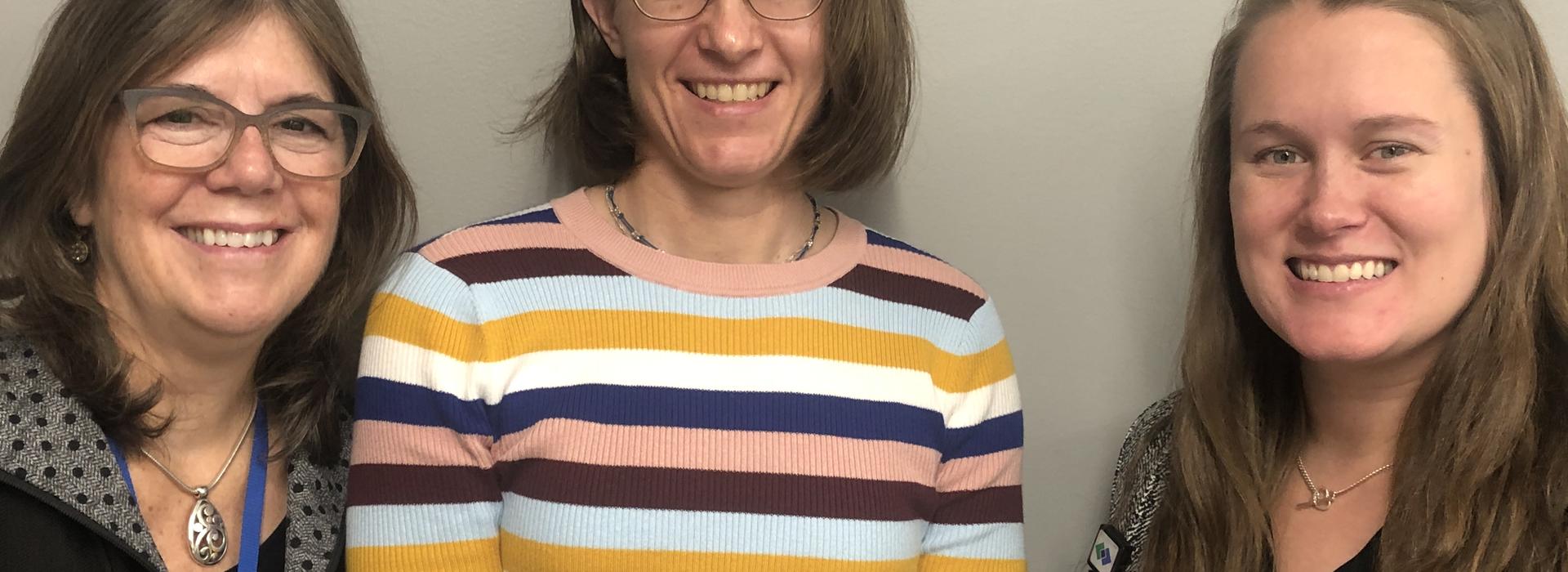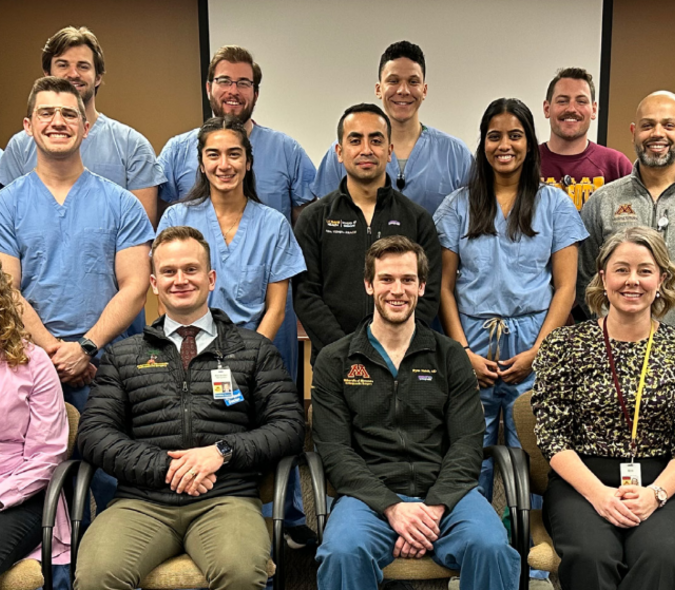
Women’s Sports Medicine Program First of its Kind in the Twin Cities
THE TWIN CITIES HAS LONG LED ORTHOPEDIC TRENDS in the Midwest. Recently, HealthPartners’ TRIA Orthopedic Center-Woodbury, in conjunction with U of M faculty, spearheaded a Women’s Sports Medicine Program (WSM), the first of its kind in the Twin Cities. The idea behind the program is to offer a collaborative approach to care for female athletes using a multidisciplinary team of orthopedic and sports medicine professionals.
“The Women’s Sports Medicine Program offers a unique, comprehensive approach to care of the active female,” explained Program Director and primary care sports medicine physician Heather Cichanowski, MD. “We all look at the bigger picture because aspects of an active female’s life such as nutrition, menstrual history, exercise and training habits, pregnancy history, and joint laxity, can impact injury patterns and recovery.”
The WSM care team consists of orthopedic surgeons, primary care sports medicine physicians, physical therapists, a sports dietitian, and athletic trainers who all have the common goal of providing comprehensive care to female athletes. The concept of the program started with Professor Edward Craig, MD, TRIA’s CEO. Craig was an attending surgeon at the Hospital for Special Surgery in New York City from 1994-2015, home of the first Women’s Sports Medicine Program in the U.S. When Craig became CEO of TRIA in 2015, he brought the vision of a similar program to the Twin Cities.
“When I came to Minnesota and observed the talented female clinicians at the University and TRIA, a center focusing on injury prevention, nutrition, treatment, and rehabilitation of the entire spectrum of musculoskeletal health of women seemed a natural and logical concept,” Craig explained.
Given the already solid foundation of women’s sports care at TRIA, Craig sought to recruit physicians within the system that would best bring the project to fruition. Cichanowski, along with Professor Elizabeth Arendt, MD, shared this vision.
“It was a natural fit and a great opportunity to expand my 15 years of sports medicine experience by partnering with a sports dietitian, physical therapists, and orthopedic surgeons,” Cichanowski says.
Cichanowski, Arendt, and Assistant Professor Caitlin Chambers, MD, make up the core WSM physicians and are dedicated to providing more comprehensive care to female athletes by having multiple specialists evaluate patients from different angles.
“All of us involved in women’s sports medicine take a holistic approach to patient health by asking about issues unique to women and girls,” Cichanowski added. “Otherwise, injuries are sometimes under treated because some of these factors aren’t considered when presenting with a musculoskeletal problem. We focus on injury reduction and prevention and give each patient the tools they need to prevent future injury.”
Chambers explained that there are several musculoskeletal conditions that are more common in females than in males.
“Anterior cruciate ligament (ACL) injuries, patellofemoral pain and instability, and hip impingement are all very common in females and sometimes present differently in females than in males,” she says.
She added that women don’t necessarily need the same things from their recovery as men. For instance, one of the reasons that females are at a higher risk for ACL injuries is a difference in landing mechanics. Females tend to land from a jump in a slightly knock-kneed position, partially because of their hip and core mechanics. This, combined with strength imbalances that are more common in women, can significantly increase the risk for primary ACL injury or re-injury.
While the Women’s Sports Medicine Program is currently comprised of all female providers, Chambers doesn’t think it necessarily needs to remain that way. The mission of the program is to have a multidisciplinary group with the common goal of recognizing and respecting sex-based differences that impact optimal treatment of female patients.
“Research has shown us that having more diverse physicians results in better care for patients,” Chambers added.
A study in the Journal of the American Medical Association found that patients who saw physicians of their own race or gender rated their decision-making and participation in care higher. The article suggests that access to a diverse group of physicians may lead to more patient involvement in their care, higher levels of satisfaction, and better health outcomes. Cichanowski believes that by incorporating issues specific to women, the program opens up an opportunity for women’s voices to be heard in the healthcare process.
“This program is a place where our goal is to keep women active and healthy, and we take the time to do that by looking at the bigger picture,” she says. “It’s a place where they feel comfortable talking about menstrual history, or perhaps past or present eating disorders, which have sometimes been stigmatized.”
The program is geared towards athletes of all ages and skill levels – from those who enjoy walking for exercise to somebody who’s training for a marathon.
“We treat the whole spectrum of female athletes,” Chambers says. “We see everyone from teenagers to post-menopausal women, and the range of bodily changes that occurs with that.”
The program just celebrated its one-year anniversary, and while it’s primarily based out of TRIA-Woodbury, the team would eventually like to expand the program to TRIA-Bloomington, which also has a solid group of female physicians, to provide convenient access to women on both sides of the Twin Cities metro.
“Another exciting thing that we started discussing is having focused women’s sports medicine clinic slots,” Chambers added. “For instance, if there is a patient with a stress fracture who is coming in to see Dr. Cichanowski, they’ll be set up to have same-day appointments with the sports dietitian and physical therapist. To truly treat everything that may be contributing to the injury, they should see all three of those people. We’re working on making that a formal program.”
Having a one-stop-shop that addresses all facets of an injury is a huge benefit. Since the program is relatively new, the care team is still working on getting the word out by hosting community seminars featuring topics of interest to active females.
“We usually have one of the doctors or our dietitian talk, and then we have some hands-on sessions with the physical therapist,” Chambers says. “Those have been really well received by the community.”
All three of the primary physicians in the WSM Program are athletic themselves, and have combined this with their sports medicine expertise as team physicians. Chambers is part of the first all-female medical team for any professional sports team in the U.S., providing care to the Minnesota Whitecaps hockey team.
“It’s really unique to have an all-female medical team,” she says. “The Whitecaps have also been helpful with some of our women’s sports medicine events.”
Cichanowski, an avid cross country skier, travels internationally as the only female team physician for the U.S. Cross-Country Ski Team. Arendt is currently a team physician for Gopher Athletics; however she was the first female medical director for men and women’s varsity athletics at the U, and the first woman to hold that position at a Division I institution in the country.
Their national recognition and expertise caring for professional athletes is a huge resource for female athletes in the Twin Cities. In addition, the program is working on research projects as a multidisciplinary team to answer questions about some of the female-specific orthopedic differences that could influence how women’s injuries are treated in the future.
“We don’t just address what the injury is,” Cichanowski says. “We put a large focus on why the injury happened. Just addressing the ‘what’ isn’t good enough, you have to go beyond that and address the ‘why’ for these injuries to be fully treated.”
For more information about TRIA-Woodbury’s Women’s Sports Medicine Program, visit: Tria.com/women



